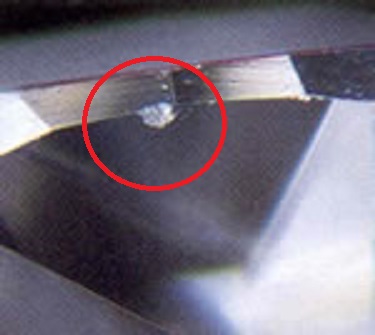A pitted facet is a diamond facet that contains multiple tiny surface pits, giving it a rough or uneven texture. These pits are small indentations or openings that can occur due to natural formation processes, cutting and polishing imperfections, or general wear over time. While individual pits may be microscopic and require 10x magnification to be seen, a pitted facet has numerous pits concentrated in one area, making the blemish more noticeable.
Impact on Diamond Quality
Pitted facets affect the polish grade of a diamond, as they interrupt the smoothness and reflectivity of the surface. Since polish is a key factor in how a diamond interacts with light, excessive pitting can slightly diminish the stone’s brilliance and sparkle.
The severity of a pitted facet depends on the number and depth of the pits:
Minor pitting may have little to no visible impact and may only be noted in a diamond grading report.
Moderate to severe pitting can affect the diamond’s overall finish and may lower its polish grade, making the blemish more apparent under magnification.
Causes and Solutions
Pitted facets can occur naturally during the diamond’s crystallization process, but they may also be caused by:
The diamond cutting and polishing process, if small inclusions break away from the surface.
Wear and tear over time, especially if the diamond is exposed to harsh conditions or abrasive materials.
While minor pitting is common and often does not require intervention, severe pitting can sometimes be improved through re-polishing by a professional diamond cutter. However, excessive re-polishing may result in weight loss, so the decision to re-cut or polish should be carefully considered.
In professional diamond grading reports from laboratories such as GIA or DCLA, a pitted facet is typically recorded under clarity characteristics and assessed as part of the stone’s overall polish grade.

